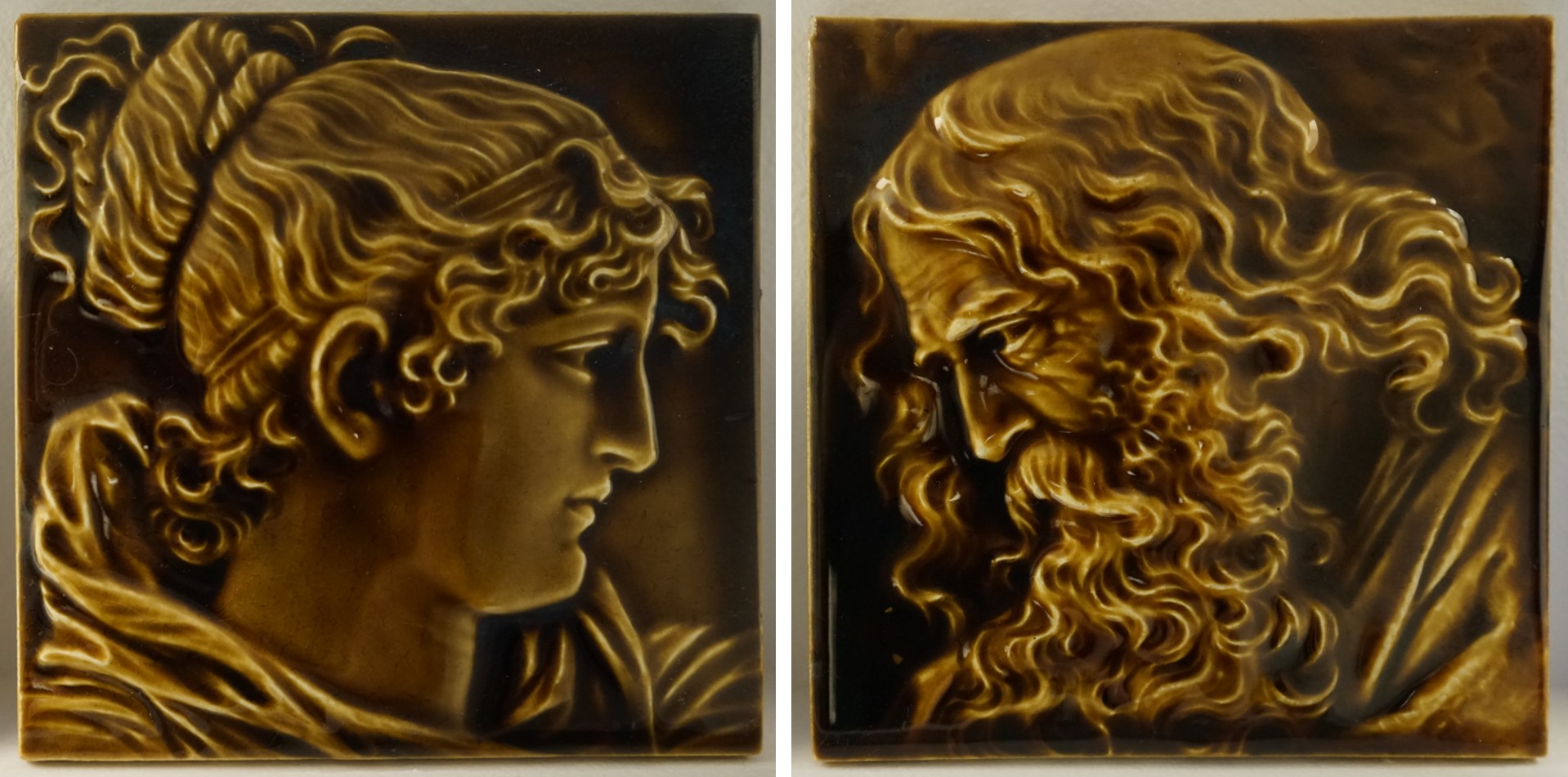Trent Tile Company was one of several tile manufacturers located in Trenton, New Jersey in the late nineteenth and early twentieth centuries. The company, which opened as Harris Manufacturing in 1882 and changed its name to Trent Tile in 1883, produced tiles featuring figures, plant and animal life, and patterns which were used to decorate everything from fireplace mantels to doorframes in private homes and businesses alike. At this time, ceramic tiles grew to be an integral component of the Arts and Crafts Movement in America, and companies like Trent Tile capitalized on customers’ desires to own finely made decorative items. Isaac Broome became the first chief designer and modeler (one who sculpts the original tile from which molds are eventually made) at Trent Tile Company in 1883. Broome was already known as a skilled craftsman when he began working at Trent, having spent several successful years designing tiles at other potteries, including Ott and Brewer, also based in Trenton. Along with producing hundreds of designs for Trent Tile Company, Broome made significant advancements in the tile manufacturing process. He patented several designs for machines that made tile manufacturing faster, cleaner, and more cost effective. Some of Broome’s best-loved designs feature people posed either as busts in profile or as full-length figures. Although not dated, Broome designed these two tiles, which feature a man and woman in profile, while employed by Trent Tile Company. They were not necessarily meant as a pair, yet their similar size and glazing may have led buyers to display them as such. Broome left Trent Tile Company in 1886 to work for a competing tile company in Trenton: Providential Tile Works. Trent Tile, in turn, replaced Broome with William Wood Gallimore, an English tile designer, but continued to produce the tiles Broome designed while at Trent for many years. Similar to other American tile companies, Trent Tile benefitted from a production boom in the early twentieth century. By 1910, the factory had over 300 employees and frantically worked to turn out enough tiles to meet consumer demands. Trent Tile suffered financial difficulties in the mid-1910s, but by the end of the decade was again producing a staggering number of tiles annually. This success lasted until the mid-1930s, when the company began to suffer from financial difficulties likely stemming from the Great Depression. The company closed in 1939, and the factory was eventually sold to another tile manufacturer. These two tiles are on view in the exhibition The Art of the Tile through December 31, 2018.
-Marcel Maria Pons, Curatorial Intern & Steffi Chappell, Curatorial Assistant


